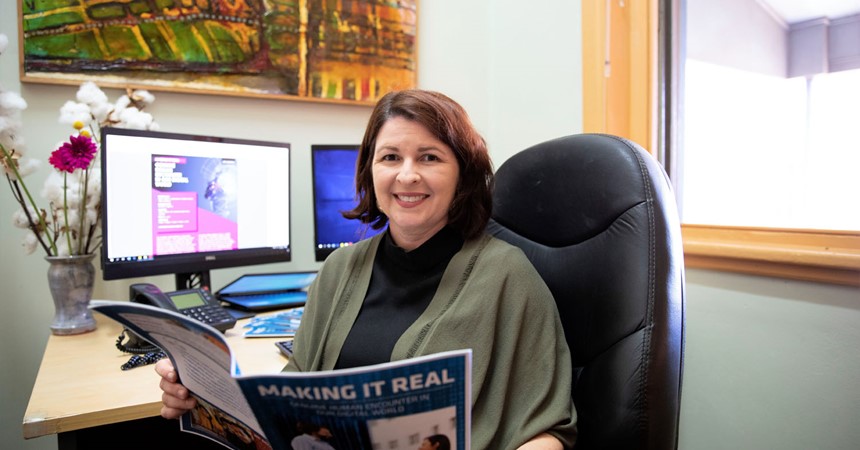COVID-19 has had an astronomical effect on everyday life and the thought of not being connected in some way, shape or form is difficult for the human race to come to grips with.
Interestingly, since the dawn of the digital age there has been a trend to get back to bare basics and live off the grid. It is a way of rejecting the social isolation the digital world may bring.
Now we find ourselves only being able to sustain genuine relationships through digital means. Social media platforms are building communities more than ever before. We are connected via Zoom and other digital platforms to pray, to sing, to hold meetings, to share family dinners and this year, to celebrate Easter.
In such a challenging time of social distancing and isolation we are thankful for the World Wide Web, now in its 30th year, as this has been a way and means to stay connected with each other.
The Social Justice Statement 2019-2020 invites us to consider the parable of the Good Samaritan as inspiration. We are called not only to love our neighbour but bring the love of God to the new global neighbourhood.
Unfortunately, there is a question over these digital platforms and whether they are used for the betterment of the human person and if they are bringing love at all. Too often the digital world has become a place of hatred, sexual objectification, exploitation and trafficking of women and children and the related production and dissemination of pornography. Cyberbullying is another way in which digital technology is used without regard for human dignity.
Most of us do not question the platforms we are using and why we are receiving the product for free. But the core business of social media platforms is to sell advertising and maximise profits. With massive amounts of our data at the hands of the advertisers or political campaigners, equipped with behavioural science modelling, we can be directly targeted and in ways previously unthinkable.
There is also a great digital divide that has been thrust upon society when e-government services have replaced face-to-face services. Access to the internet also poses many concerns among the marginalised and disadvantaged.
While our digital world has many advantages this Social Justice Statement clearly points out the many dangers and ways in which society can be disadvantaged through its use.
The statement calls us to not just be inhabitants of this new digital world, but be active citizens shaping it. We have a responsibility in rejecting hatred and division to foster a neighbourhood that promotes human dignity, solidarity and the common good.
Genuine relationships are based on the dignity of the other who is made in the image and likeness of God. True encounters make real the love of God in life with our neighbour. Technology allows us to work across cyberspace without human touch. When we do emerge from the pandemic and can live together in a community once more there may be a trend to put devices down, to connect and make real, genuine human encounters.
We are inviting artists to create a work based on the themes found in the Social Justice Statement. Works must be on A3 paper, with their name, title, school, parish or phone number clearly labelled on the back. This information plus a 150-word (maximum) artist statement must accompany the work and be emailed through to rose.mcallister@mn.catholic.org.au before 14 August.
Entries close: Friday 14 August, delivered to Catholic Schools Office reception.
Exhibition date: Saturday 29 August
Location: Veritas Centre, San Clemente High School, Mayfield
Time: 2pm–5pm






















































































